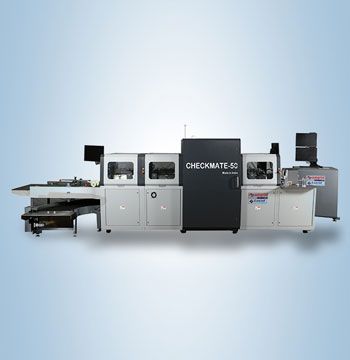The Heat is On: Understanding the Differences Between Heat-Set Web Offset and Cold-Set Offset Printing Machines
2023-12-28
Introduction
In the dynamic world of printing, offset printing remains a dominant force, offering diverse applications for high-volume production. Two prominent variations within offset printing are heat-set web offset and cold-set offset presses. This blog explores the distinctive features that set these two printing technologies apart, shedding light on how they operate, the types of projects they are best suited for, and the unique characteristics that define their respective roles in the printing industry.
Heat-Set Web Offset Printing Machine:
1. Printing Process:
- Ink Drying Method:
Heat-set web offset printing utilizes heat to expedite the drying process of the ink. The printed material passes through a drying oven where heat is applied to evaporate the solvents in the ink, resulting in rapid drying and set ink on the paper.
- Web Configuration:
Heat-set web offset presses are designed to handle continuous rolls of paper known as webs. The web travels through the press at high speeds, allowing for efficient and high-volume printing.
2. Types of Inks:
- Heat-set inks are formulated with a higher percentage of volatile solvents that evaporate quickly when exposed to heat. These inks are well-suited for glossy or coated papers commonly used in magazine printing.
3. Applications:
- Heat-set web offset printing is ideal for high-quality, full-color printing on coated or glossy stocks.
- Common applications include magazines, catalogs, advertising inserts, and other publications where vibrant colors and sharp images are essential.
4. Drying Time:
- The use of heat allows for rapid ink drying, enabling quick turnaround times for large print runs.
Cold-Set Offset Printing Machine:
1. Printing Process:
- Ink Drying Method:
Cold-set offset printing relies on the absorption and penetration of ink into the paper without the need for external heat. The printed material is left to air-dry naturally, allowing the ink to set over time.
- Web Configuration:
Cold-set offset presses also handle continuous rolls of paper, and the printing process occurs at lower speeds compared to heat-set web offset printing.
2. Types of Inks:
- Cold-set inks contain a higher percentage of non-volatile oils, which do not require heat to set. These inks are suitable for uncoated or newsprint papers.
3. Applications:
- Cold-set offset printing is commonly employed for newspapers, books, and other high-volume publications where cost-effective production on newsprint or uncoated stocks is prioritized.
- While capable of producing high-quality results, cold-set printing is generally associated with a more straightforward appearance compared to the glossier output of heat-set web offset.
4. Drying Time:
- Cold-set printing requires a longer drying time as the ink is absorbed into the paper and left to dry naturally.
Key Differences:
1. Paper Type:
- Heat-set is compatible with coated and glossy stocks, while cold-set is often used on newsprint and uncoated papers.
2. Drying Speed:
- Heat-set offers faster drying times due to the application of heat, making it suitable for high-speed, high-volume printing.
- Cold-set requires a longer drying time as it relies on natural absorption and evaporation processes.
3. Applications and Image Quality:
- Heat-set excels in producing vibrant, high-resolution images on glossy stocks, making it suitable for visually rich applications like magazines and catalogs.
- Cold-set is favored for newspapers and publications where cost-effectiveness and speed are prioritized over glossy aesthetics.
4. Ink Composition:
- Heat-set inks contain a higher percentage of volatile solvents for quick drying, while cold-set inks have more non-volatile oils for absorption-based drying.
Conclusion
Understanding the distinctions between heat-set web offset and cold-set offset printing machines is crucial for choosing the right technology based on the specific requirements of a printing project. Whether it's the glossy allure of a high-end magazine or the cost-effective production of newspapers, these printing technologies cater to diverse needs within the expansive landscape of offset printing. The choice between heat-set and cold-set ultimately depends on factors such as paper type, print quality expectations, and the intended application of the final product.



